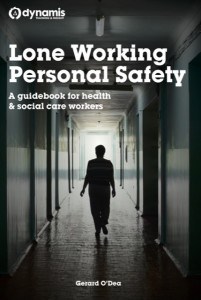Risks of Lone Working in The Community
In discussing this topic, I want to first turn our attention to a Royal College of Nursing study dealing with the issues of lone working and personal safety. The survey is very comprehensive and asked about 1500 nurses who work in the community about their experience of such. I want to pick out a few of the more salient points before we go ahead and discuss some of the Lone Working issues raised.
- almost two-thirds of staff said that their employers did not know their whereabouts on a given day while they are at work.
- almost 40% of staff said that they rarely, never or only sometimes carried out risk assessments prior to a client visit
- over 75% of staff said that they wished they had more information about their service users, to enable them to work safely with them
- only 86.5% of physical assaults were reported to a line manager.
We have met home care staff who might visit up to 14 people in one day while they are at work. My question to them is always: if I walked in to your supervisor’s office one day while you are at work and asked, “where is Mary right now, and is she safe?” then what quality of answer would I get?
Depending on the team we are working with, the Risks of Lone Working and the answers vary hugely. Criminal Justice teams tend to be very aware of the risk their workers may face. Home Care staff tend to be left to their own devices – there are so many of them, and they are generally unqualified and therefore not ‘core’ resources, perhaps?
Lone Working teams manage whereabouts using a variety of methods. In/out boards are a favourite. Workers write down their itinerary for the day, who they are visiting and when, what time they expect to finish the visit. People at the office can check, if asked, and then make a phone call to confirm whereabouts and safety. Asked if they ever receive “just checking you’re okay” phone calls, though, the answer reflects a general sense that this is a less than robust safety system.
Workers sometimes visit with their clients out of hours which increases the Risks of Lone Working. No one is at the office to check the in/out board. The receptionist (or the person delegated as such) leaves at 4pm. There is an on-call manager but he is only to be called in emergencies. Visits happen all the way up to 10pm and beyond sometimes for some lone working teams…
Managing The Risks of Lone Working
The burning question, which should be keeping those responsible for managing safety up at night, is: “are you supervising the work that is going on in your team adequately, and is the system you have put in place robust?”
Another way to put this, perhaps in less stark terms is: “if one of your staff feels unwell, faints and collapses in a clients home, then when do we find out she needs help, and how?”. If the answer is not a comprehensive one, and one that people can have confidence in, then perhaps it is time to review and tighten those lone working systems.
The common joke we hear from staff, hiding a dark reality, is that the alarm would be raised when their family is sat around their dinner table, “wondering where that woman who cooks dinner is?”
An entire industry has come of age to support the responsibilities of managers in adequately supervising lone working teams. Devices using mobile phone and messaging technology, gps tracking, process management software and alarm-receiving call centres are now available which can significantly increase the level of supervision and support offered to staff.
Care Services wishing to control their exposure to a training omission could explore our Lone Working personal safety training or Breakaway training for appropriate control measures.

Gerard O’Dea is a conflict management, personal safety and specialist training consultant on the Risks of Lone Working. He is the training director for Dynamis, a specialist in personal safety and violence reduction initiatives and the European Adviser for ‘Verbal Defense and Influence’, a global programme which addresses the spectrum of human conflict. www.dynamis.training
Gerard’s book on Lone Worker Personal Safety is available on Amazon Kindle and Paperback.



